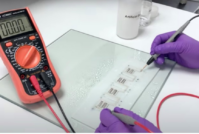Creating With Chemistry

The chemistry is complex. But understanding the benefits to our everyday lives is a no-brainer.
The origin of polyurethane dates back to the beginning of World War II with the development of a new organic polymer intended to replace rubber. Since then, advancements in chemical technology and new formulations have resulted in the variety of applications you see on this website.
But what exactly is polyurethane? Well, it’s a polymer.
The simplest definition of a polymer is a useful chemical made of many repeating molecular units. Polymers abound in nature. The ultimate natural polymers are the deoxyribonucleic acid (DNA) and ribonucleic acid (RNA) that define life. Spider silk, human hair, and deer antlers are other examples of naturally occurring protein polymers.
The first synthetic manufactured polymer was Bakelite, created in 1909 for telephone casing and electrical components. The first manufactured polymeric fiber was rayon, from cellulose, in 1910. Nylon was invented in 1935 while pursuing a synthetic spider silk. The formulation we know of as polyurethane soon followed.
Okay, so here’s where it gets a little technical. Polyurethanes are formed by reacting a polyol (an alcohol with more than two reactive hydroxyl groups per molecule) with either a diisocyanate or a polymeric isocyanate in the presence of suitable catalysts and additives.
The variety of diisocyanates and the wide range of polyols which can be used to produce polyurethane are the reasons such a broad spectrum of materials and solutions can be produced. And it’s why “versatile” is such an appropriate word in describing polyurethane.
It’s also key to understand that polymers, by their very nature, are extremely strong and resistant to weather and chemical reaction from other elements. So “durable” is another appropriate descriptor for polyurethane.
Learn more about the history and applications of polyurethane.

























